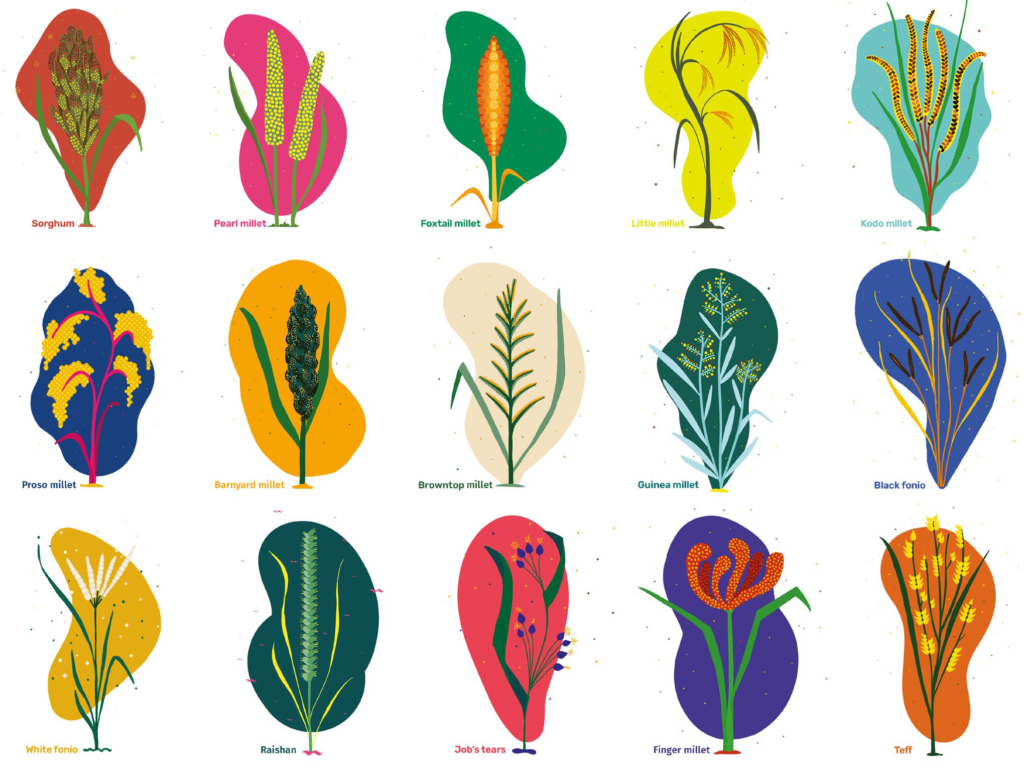
In the year 2023, the United Nations declared it the International Year of Millets. This was a significant moment for the ancient crop, which had been overlooked in favor of modern grains like wheat, rice, and corn. Millets, a group of small-seeded grasses, were once a staple in human diets around the world but had fallen out of favor in recent decades.
The International Year of Millets aimed to raise awareness about the nutritional and ecological benefits of this crop. Millets are highly nutritious, gluten-free, and can grow in poor soil conditions, making them an excellent crop for small farmers. Additionally, they require much less water than other grains, making them an excellent choice for regions affected by drought.
Governments around the world pledged to promote the cultivation and consumption of millets. They organized fairs, workshops, and seminars to educate farmers and consumers about the benefits of millets. The United Nations launched a global campaign to promote millets, featuring celebrities and chefs cooking millet-based dishes.
As a result of these efforts, the demand for millets increased significantly. Farmers who had been growing millets for generations saw an increase in their incomes as consumers started to appreciate the nutritional and ecological benefits of millets. In many parts of the world, millets became a popular choice for health-conscious consumers.
The International Year of Millets also had a positive impact on the environment. Millets require less water and fewer inputs than other grains, making them an excellent crop for sustainable agriculture. As the demand for millets increased, farmers started to adopt more sustainable practices, such as organic farming and conservation agriculture.
In the end, the International Year of Millets was a resounding success. It helped to raise awareness about the nutritional and ecological benefits of millets and encouraged farmers to adopt more sustainable practices. Millets became a popular choice for health-conscious consumers, and their cultivation contributed to a more sustainable food system. The International Year of Millets was a reminder of the importance of traditional crops in our food systems and the need to promote sustainable agriculture.
Millets are a group of small-seeded grasses that have been cultivated for thousands of years. They are highly nutritious, gluten-free, and can grow in poor soil conditions, making them an excellent crop for small farmers. Additionally, they require much less water than other grains, making them an excellent choice for regions affected by drought. In this answer, we’ll discuss some of the most common types of millets:
1. Pearl Millet: Pearl Millet, also known as Bajra, is one of the most widely grown types of millets in India. It is a drought-tolerant crop and is commonly used to make roti, a type of Indian bread. Pearl millet is rich in iron, calcium, and protein, making it an excellent choice for vegetarian diets.
2. Foxtail Millet: Foxtail Millet, also known as Kangni or Kakum, is a small-grained cereal crop that is primarily grown in India, China, and Japan. It is rich in fiber and protein and has a low glycemic index, making it an excellent choice for people with diabetes. Foxtail millet is often used to make porridge, upma, and idli.
3. Finger Millet: Finger Millet, also known as Ragi, is a popular type of millet in India and Africa. It is a rich source of calcium, iron, and protein and is often used to make porridge, roti, and dosa. Finger millet has a low glycemic index and is an excellent choice for people with diabetes.
4. Little Millet: Little Millet, also known as Kutki or Sama, is a small-grained cereal crop that is commonly grown in India. It is a rich source of protein, fiber, and minerals and has a low glycemic index. Little millet is often used to make upma, khichdi, and pulao.
5. Barnyard Millet: Barnyard Millet, also known as Sanwa, is a small-grained cereal crop that is commonly grown in India and China. It is a rich source of fiber and has a low glycemic index, making it an excellent choice for people with diabetes. Barnyard millet is often used to make upma, khichdi, and dosa.
In addition to these, there are other types of millets like Kodo Millet, Proso Millet, and Sorghum Millet, each with their unique nutritional and culinary properties. Overall, millets are a highly nutritious and versatile group of crops that are becoming increasingly popular among health-conscious consumers.
| Type of Millet | Scientific Name | Local Names | Family | Origin | Culinary Uses |
| Pearl Millet | Pennisetum glaucum | Bajra | Poaceae | Africa | Roti, porridge, khichdi |
| Foxtail Millet | Setaria italica | Kanngani/kakun | Poaceae | China | Porridge, upma, idli |
| Finger Millet | Eleusine coracana | Ragi/Mandua | Poaceae | Africa | Porridge, roti, dosa |
| Little Millet | Panicum sumatrense | Kutki | Poaceae | India | Upma, khichdi, pulao |
| Barnyard Millet | Echinochloa crus-galli | Sawa/Sanwa/Jhangora | Poaceae | India, China | Upma, khichdi, dosa |
| Kodo Millet | Paspalum scrobiculatum | Kodon | Poaceae | India | Porridge, khichdi, pulao |
| Proso Millet | Panicum miliaceum | Cheena/Barri | Poaceae | Europe, Asia | Porridge, pilaf, bread |
| Sorghum Millet | Sorghum bicolor | jowar/broomcorn/guinea corn/durra/imphee/milo | Poaceae | Africa | Porridge, bread, beer |

